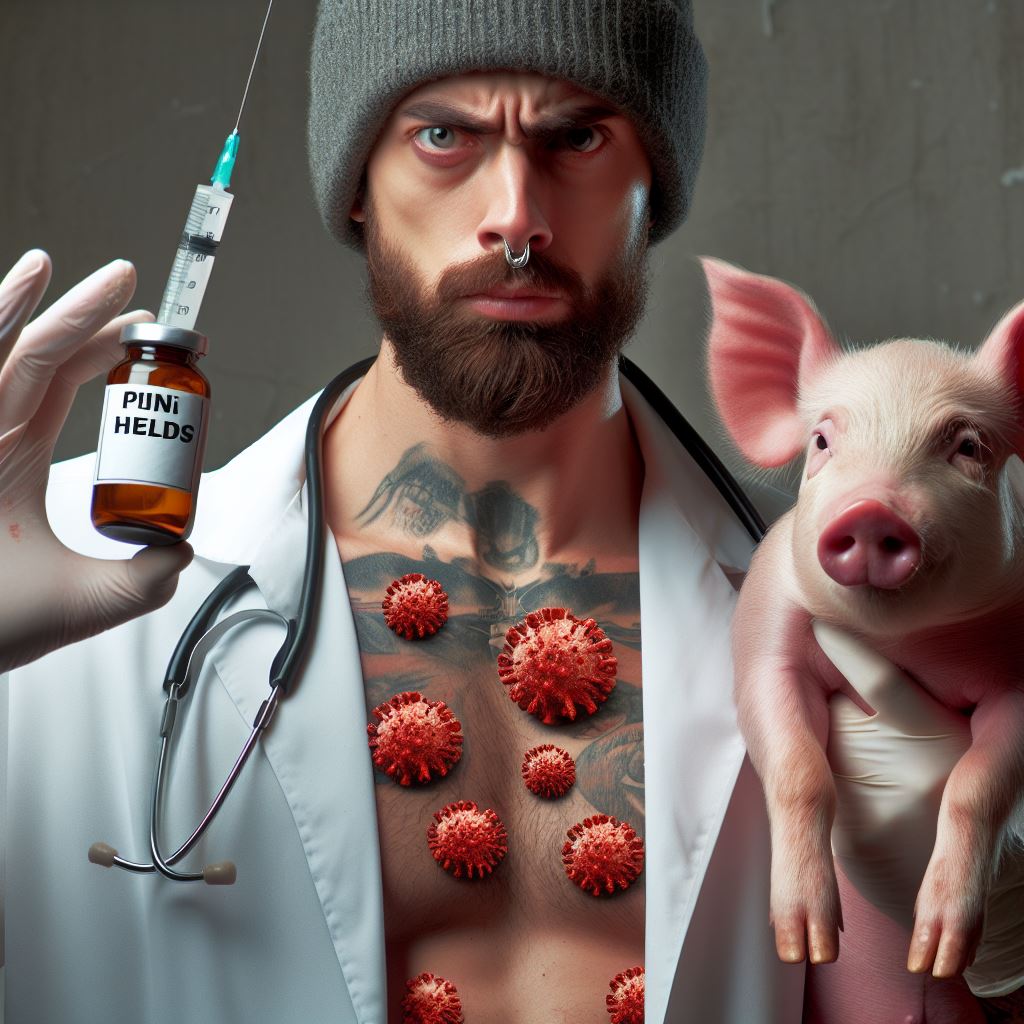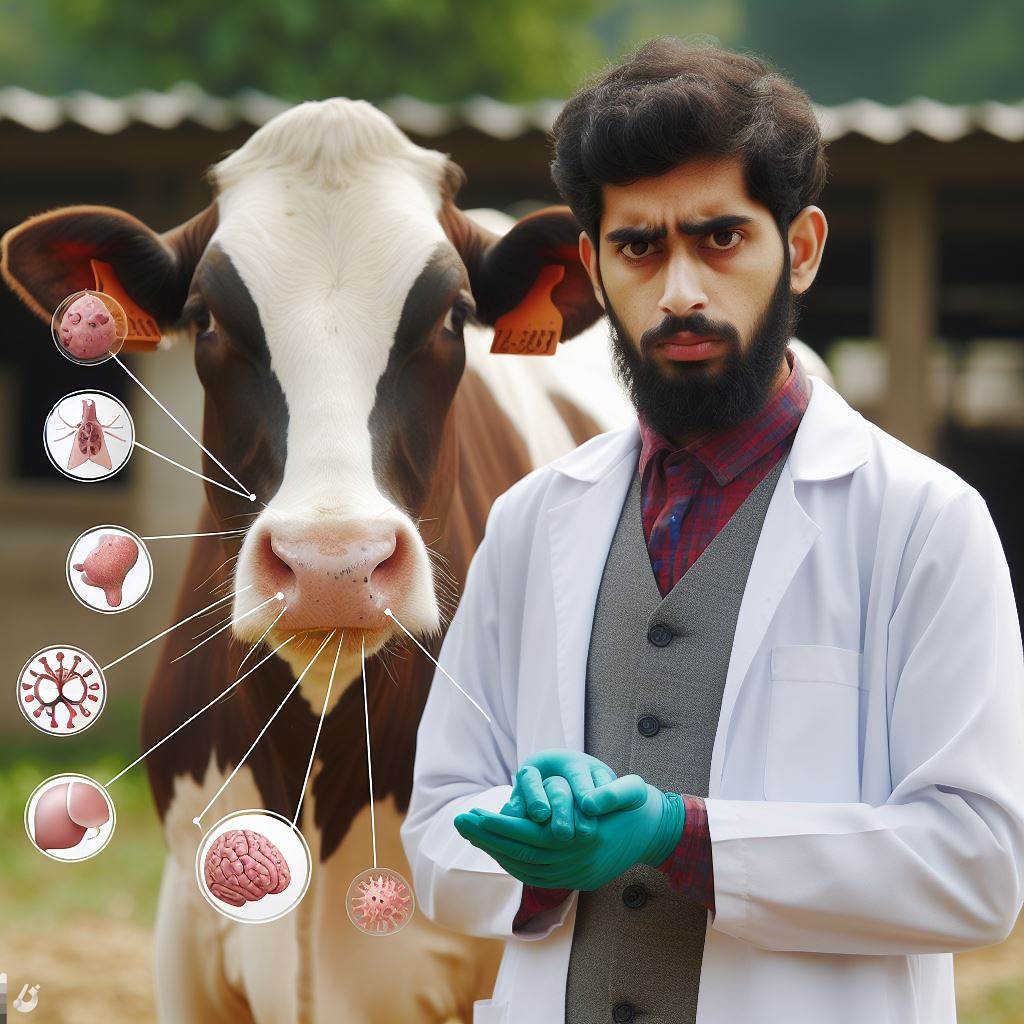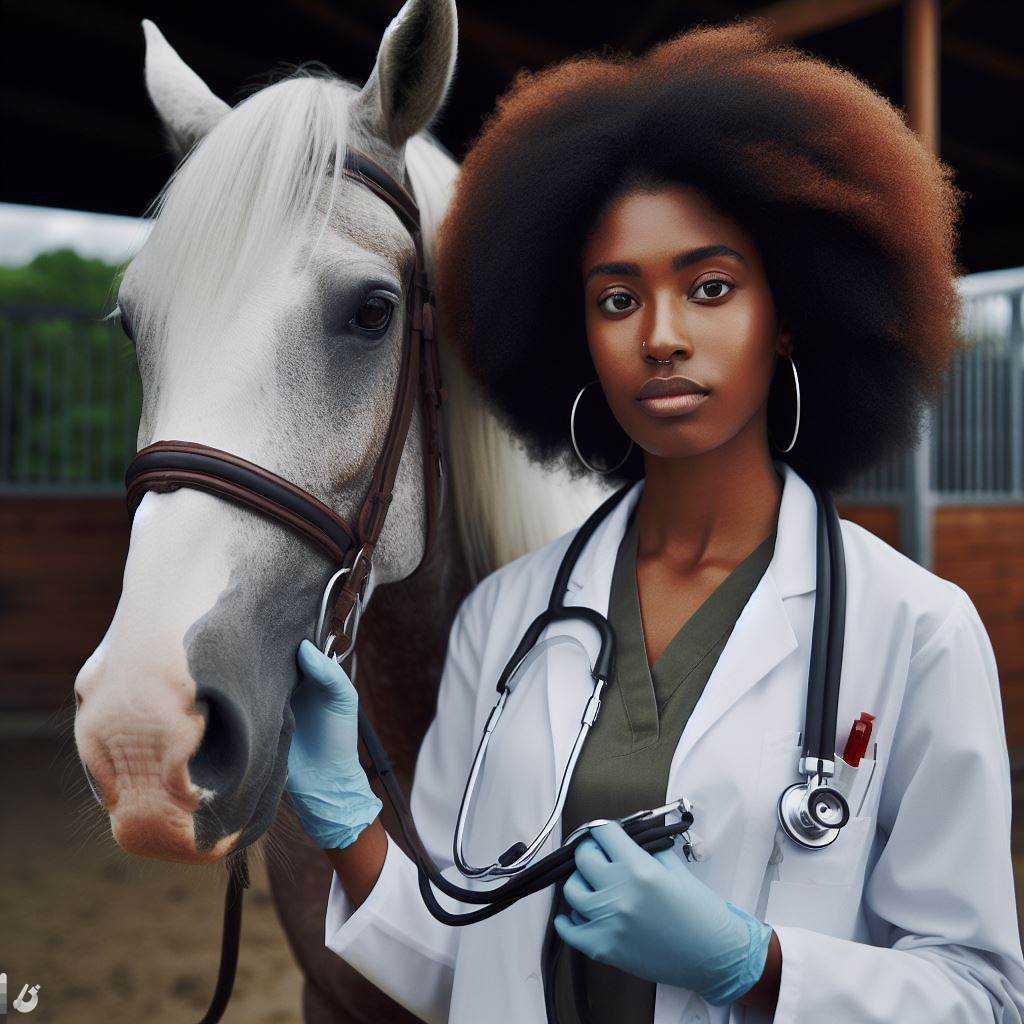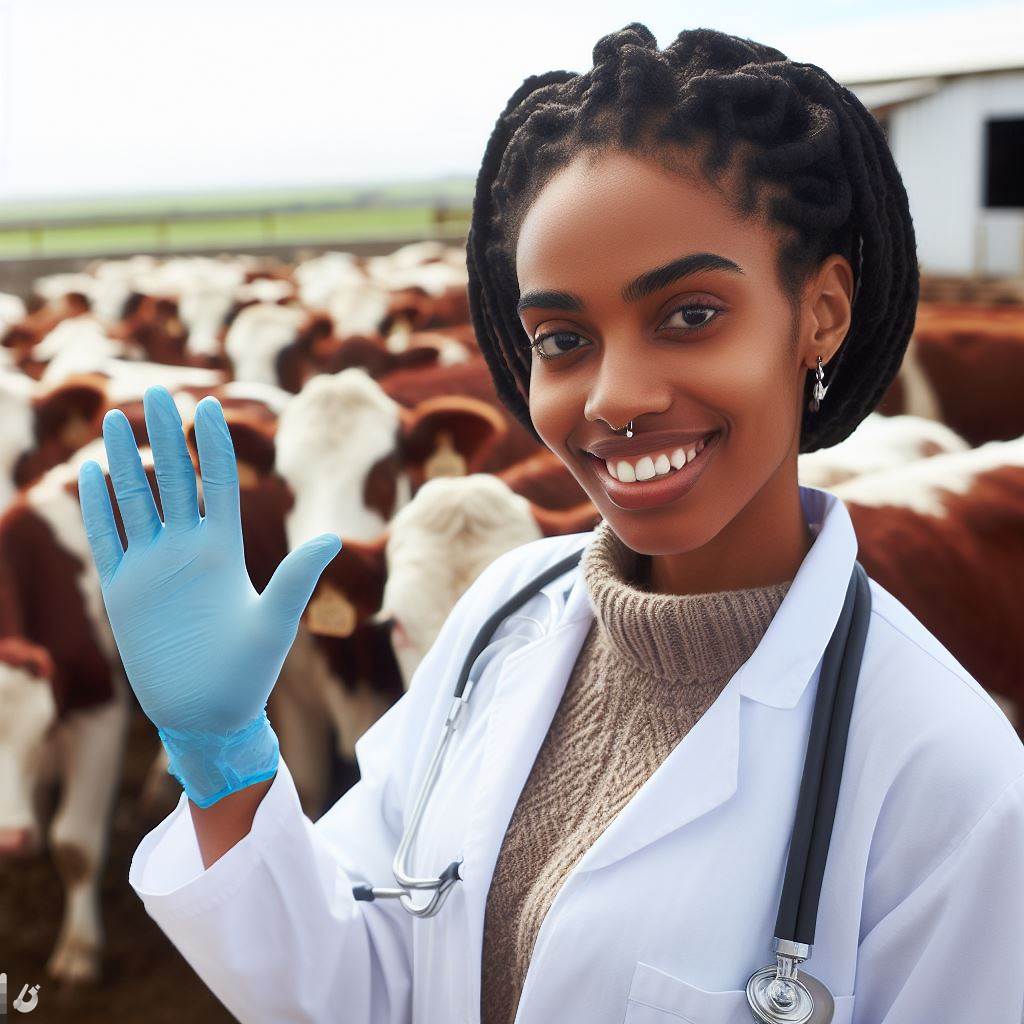Introduction
Introducing the pressing concern of swine flu and its potential impact on pig herds, we delve into the imperative of safeguarding these animals.
Protecting pig herds is not just a matter of health; it’s a pivotal aspect of ensuring the sustainability and prosperity of the entire farm.
Throughout this blog, we will explore the symptoms and transmission of swine flu, emphasizing the proactive measures that farmers can adopt.
From vaccination strategies to robust biosecurity practices, we aim to provide valuable insights.
Additionally, the importance of seeking professional guidance for tailored strategies will be highlighted.
Join us on this journey to fortify your understanding of swine flu and discover effective ways to shield your pig herds from this prevalent threat.
Understanding Swine Flu
What swine flu is and how it spreads
Swine flu, also known as H1N1 influenza, is an infectious respiratory disease that affects pigs.
It spreads through direct contact with infected pigs, their body fluids, or contaminated surfaces.
The virus can also be transmitted to humans who come into close contact with infected pigs.
Different strains of swine flu and their potential effects on pig herds
There are multiple strains of swine flu, including H1N1, H1N2, and H3N2, affecting pig populations worldwide.
These strains vary in their ability to cause illness and can lead to respiratory problems, reduced growth rates, and increased mortality in pig herds.
Furthermore, they can cause economic losses for pig farmers due to reduced productivity and the cost of treatment.
Symptoms of swine flu in pigs
The symptoms of swine flu in pigs include coughing, fever, nasal discharge, decreased appetite, and lethargy.
Infected pigs may also show signs of difficulty breathing, sneezing, and eye inflammation.
It is important to note that swine flu symptoms can be similar to other respiratory diseases in pigs, making diagnosis challenging.
Transform Your Agribusiness
Unlock your farm's potential with expert advice tailored to your needs. Get actionable steps that drive real results.
Get StartedTo effectively manage and control swine flu outbreaks, pig farmers should follow these prevention and control measures:
- Vaccination: Administer vaccines specific to the strains prevalent in the region, as recommended by veterinarians. Vaccination can significantly reduce the severity and spread of swine flu in pig herds.
- Biosecurity: Implement strict biosecurity protocols to prevent the introduction and spread of the virus into the farm. This includes limiting visitor access, ensuring proper sanitation and disinfection, and maintaining separate areas for sick pigs.
- Isolation and Quarantine: Immediately isolate sick pigs and implement a quarantine area for newly arrived pigs. This prevents the spread of swine flu to healthy pigs and helps control the outbreak.
- Monitoring and Surveillance: Regularly monitor pig herds for any signs of illness and report suspected cases to veterinarians. Early detection allows for prompt intervention and reduces the risk of widespread infection.
- Hygiene Practices: Encourage proper hand hygiene among farm workers, especially after handling sick pigs or coming into contact with their bodily fluids. The use of personal protective equipment, such as gloves and masks, can also minimize the risk of transmission.
- Nutritional Support: Ensure pigs have a balanced diet and access to clean drinking water to maintain their overall health and immunity. Proper nutrition can enhance their ability to fight off infections, including swine flu.
Therefore, understanding swine flu and its transmission is crucial for protecting pig herds.
By implementing proactive prevention measures, such as vaccination, biosecurity, and regular monitoring, farmers can reduce the impact of swine flu on their operations and safeguard their pigs’ health.
Read: Sheep Flock Health: Common Illnesses Guide
Preventive Measures
The significance of vaccination for swine flu prevention
- Vaccination plays a crucial role in protecting pig herds against swine flu.
- Make sure to consult with a veterinarian to determine the appropriate vaccination schedule.
- Vaccinating all pigs in the herd helps establish herd immunity, reducing the risk of transmission.
- Keep records of vaccination dates and the types of vaccines administered to ensure proper protection.
Importance of quarantine and biosecurity measures
- Quarantine newly acquired pigs for at least 30 days to prevent the introduction of swine flu.
- Maintain proper biosecurity measures, such as controlling access to the pig facility, to prevent disease spread.
- Isolate sick pigs immediately and implement strict biosecurity protocols to minimize disease transmission.
- Regularly disinfect equipment, housing, and vehicles to reduce the risk of contamination.
Role of proper hygiene and sanitation practices in preventing swine flu outbreaks
- Implement strict hygiene practices, including handwashing and using disinfectants, to prevent the spread of swine flu.
- Regularly clean and sanitize pig pens, feeding and watering areas, and other high-risk areas.
- Properly dispose of manure and other waste materials to prevent disease transmission.
- Encourage employees and visitors to follow hygiene protocols to maintain a disease-free environment.
Benefits of regular health monitoring and testing for swine flu in pig herds
- Conduct regular health monitoring to detect swine flu in its early stages and prevent severe outbreaks.
- Implement regular testing for swine flu to identify infected pigs and take appropriate actions.
- Early detection allows for prompt treatment and management, reducing the overall impact on herd health.
- Collaborate with a veterinarian to establish a comprehensive health monitoring and testing program.
Read: Robotics in Poultry Farming: The Future Is Here

Disease Management
Outline the steps to follow in case of a swine flu outbreak
- Immediately notify local veterinary authorities about the outbreak.
- Isolate sick pigs from healthy ones to prevent further spread of the disease.
- Implement strict biosecurity measures to control the movement of people and vehicles.
- Follow recommended quarantine procedures for infected premises.
- Monitor and document pig health, symptoms, and mortality rates.
- Cooperate with veterinary authorities during investigations and testing.
- Provide accurate and timely information to all stakeholders.
The options for treatment and medication for infected pigs
- Consult a veterinarian for appropriate antiviral medications.
- Administer medications as prescribed to control symptoms and support pig recovery.
- Ensure proper dosage and duration of treatment according to veterinary recommendations.
- Monitor individual pig response to medication and adjust treatment if necessary.
- Continue treatment until pigs show signs of improvement and are no longer contagious.
Need for isolation of sick pigs and proper disposal of carcasses to prevent further spreading of the disease
Isolation of sick pigs
- Separate infected pigs from healthy ones to avoid disease transmission.
- Provide isolated pigs with proper individual housing and prevent contact with unaffected pigs.
- Follow strict hygiene protocols when entering and exiting isolation areas to prevent cross-contamination.
Proper disposal of carcasses
- Handle and dispose of dead pig remains following established guidelines and regulations.
- Bury or incinerate carcasses to avoid contamination of soil, water sources, and other animals.
- Use biosecure rendering facilities for safe and controlled disposal if available.
- Follow protocols for disinfection of equipment used during carcass disposal.
- Regularly monitor disposal sites to ensure proper containment and prevent scavenger access.
Most importantly, efficient disease management during a swine flu outbreak is vital to prevent further spreading of the disease.
By promptly notifying veterinary authorities, implementing strict biosecurity measures, and following proper treatment, isolation, and disposal protocols, pig herds can recover and minimize the impact of the outbreak.
Read: Advancements in Veterinary Diagnostic Tools
Financial Impact and Insurance Options
Address the potential financial losses associated with swine flu outbreaks
- Swine flu outbreaks can cause significant financial losses for pig herds due to increased mortality rates.
- The cost of treating infected pigs, implementing biosecurity measures, and disinfecting facilities can be substantial.
- Losses also result from decreased productivity, as infected pigs may have reduced growth rates and poor feed conversion.
- Market prices for pigs may decrease as consumers lose confidence in the safety of pork products during an outbreak.
Types of insurance coverage available for pig herds and their benefits
- Livestock insurance provides coverage for mortality losses caused by swine flu and other diseases.
- Business interruption insurance compensates for the loss of income during a swine flu outbreak.
- Extra expense insurance covers additional costs incurred to prevent the spread of the virus and maintain operation.
- Liability insurance protects against possible legal claims if the infection spreads to neighboring farms.
Guidance on choosing the right insurance policy to mitigate the financial risks of swine flu
- Evaluate the coverage options carefully and consider the specific needs and risks of your pig herd.
- Select an insurance policy that provides comprehensive coverage for swine flu outbreaks, including mortality and business interruption.
- Ensure the policy covers necessary expenses like veterinary care, testing, and disinfection procedures.
- Review the policy’s exclusions and limitations, and consult with the insurance provider for clarification if needed.
- Compare different insurance companies to find the best coverage at a competitive premium.
- Consider the financial stability and reputation of the insurance provider before making a final decision.
- Seek advice from experienced farmers or professionals in the industry to gain insight into their insurance experiences.
- Keep records of all pig and farm-related activities to support insurance claims, if necessary.
- Regularly reassess your insurance policy to ensure it aligns with your evolving needs and the latest market conditions.
- Consult with an insurance agent or broker specialized in agricultural coverage for personalized assistance.
In essence, swine flu outbreaks can have a significant financial impact on pig herds.
Having appropriate insurance coverage is crucial in mitigating the financial risks associated with these outbreaks.
By carefully evaluating insurance options, selecting comprehensive coverage, and regularly reviewing policies, pig farmers can protect themselves financially and ensure the continuity of their operations even during swine flu outbreaks.
Read: Poultry Diseases: Prevention & Care Tips
Learning from Past Experiences
Case Studies and Examples
- The 2009 swine flu pandemic serves as a prime example of a serious outbreak that affected pig herds worldwide.
- At that time, pig farmers had to swiftly implement strategies to control the spread of the virus.
- By studying this case, we can learn valuable lessons on how to effectively manage swine flu outbreaks.
- Another case worth mentioning is the swine flu outbreak in the United States in 2015, which led to significant economic losses.
- Pig farmers were compelled to adopt strict biosecurity measures to minimize the impact of the outbreak.
- These case studies illustrate the challenges faced by pig farmers during swine flu outbreaks and the need for proactive management.
Successful Strategies Implemented by Pig Farmers
- Vaccination has been a successful strategy utilized by pig farmers to protect their herds from the swine flu virus.
- Regular vaccination programs can significantly reduce the risk of an outbreak and help maintain a healthy pig population.
- Strict biosecurity protocols, such as controlling access to farms and implementing quarantine measures, have proven effective.
- Regular testing and monitoring of pig herds for early detection of the virus allows prompt action to prevent the spread.
- Collaborative efforts between pig farmers, veterinarians, and government authorities have also contributed to successful control strategies.
- Adapting pig farming practices to incorporate better ventilation, hygiene, and animal welfare can minimize the risk of swine flu transmission.
Lessons Learned and Preventive Measures
- One key lesson learned from past swine flu outbreaks is the importance of early detection and rapid response.
- Timely reporting and testing of suspected cases are crucial to contain the virus and prevent wider spread.
- Improved communication channels between pig farmers, veterinary authorities, and researchers are essential to share information and strategies.
- Enhancing public awareness about swine flu prevention measures can help prevent the introduction of the virus to pig herds.
- Regular training and education programs for pig farmers on best practices and biosecurity protocols are vital.
- Continued research and development of effective vaccines, diagnostic tests, and antiviral treatments are essential for future preparedness.
- Investing in surveillance systems to monitor swine flu prevalence and the emergence of new strains can inform preventive measures.
In short, studying past swine flu outbreaks and the strategies used to manage them provides valuable insights for pig farmers.
Successful strategies like vaccination, biosecurity protocols, and collaboration have proven effective in protecting pig herds from swine flu.
By applying lessons learned and implementing preventive measures, we can mitigate the impact of future swine flu incidents and safeguard pig populations.
Conclusion
The defense against swine flu is paramount for sustaining pig herds and ensuring the longevity of farm operations.
This blog has highlighted the risks posed by swine flu, from its symptoms to transmission methods.
The emphasis on preventive measures, including timely vaccination and robust biosecurity practices, stands as a shield against potential economic losses and the threat to herd health.
Reiterating the critical importance of protecting pig herds from swine flu cannot be overstated.
It goes beyond safeguarding individual pigs; it is a commitment to the overall sustainability and success of the farm.
As stewards of these animals, farmers are urged to implement preventive measures consistently and seek professional guidance for tailored strategies.
By acting on these recommendations, farmers not only ensure the well-being of their pig herds but also contribute to the resilience and prosperity of their entire farming ventures.
The proactive approach to swine flu prevention is an investment in the health of the herds and the economic stability of the farm, solidifying a foundation for long-term success.




